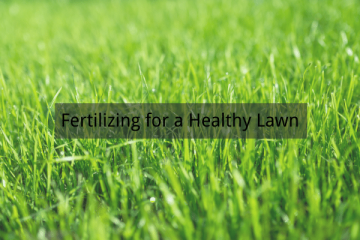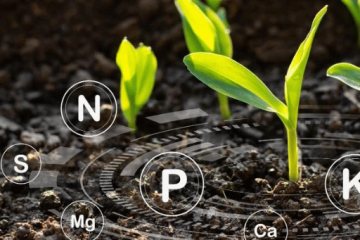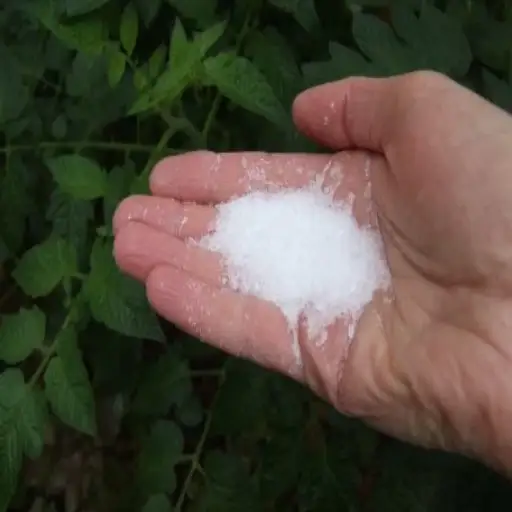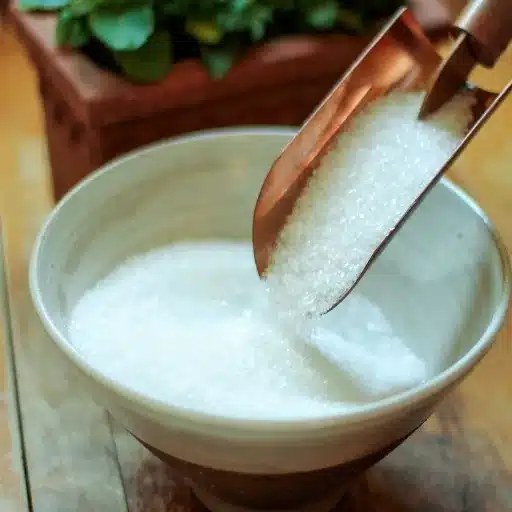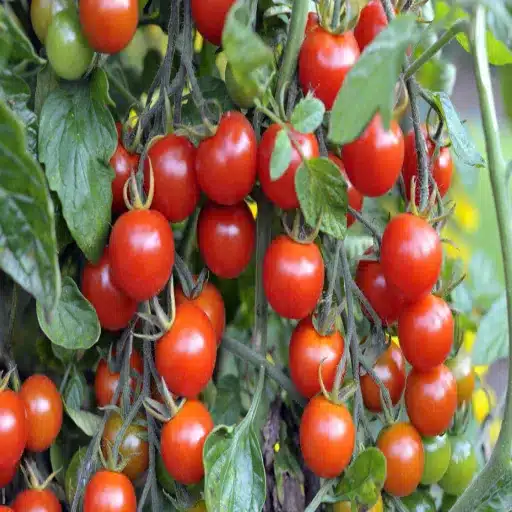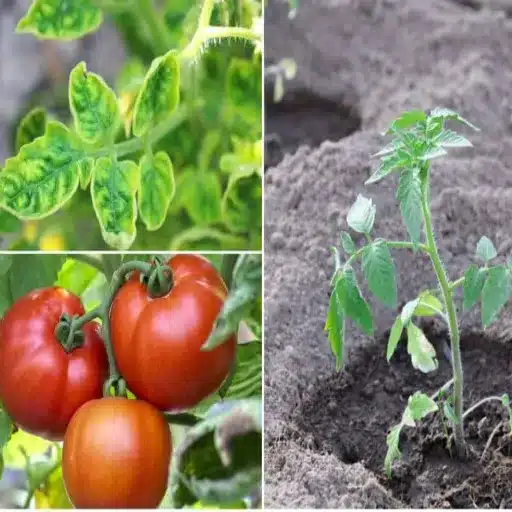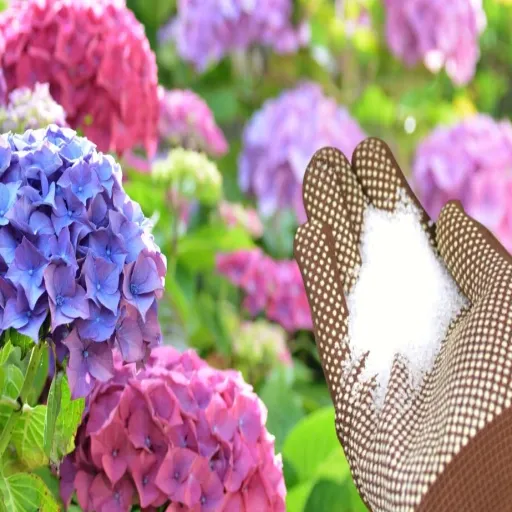Epsom salt, scientifically known as magnesium sulfate, has long been heralded as a versatile and economical tool in the gardener’s arsenal. This naturally occurring mineral compound contains two essential nutrients—magnesium and sulfur—that are critical for plant health. The widespread use of Epsom salt can address nutrient deficiencies, improve soil conditions, and invigorate plants, making it an indispensable aid for both novice and experienced gardeners alike. Whether you are looking to boost flowering, enhance crop yield, or simply maintain the vitality of your garden, understanding the practical applications of Epsom salt can yield remarkable results. This guide explores the science behind its effectiveness, common methods of application, and the specific benefits it provides to an array of plants. From vegetables to flowering ornamentals, discover how Epsom salt can elevate the health and productivity of your garden.
What are the benefits of using Epsom salt for plants?
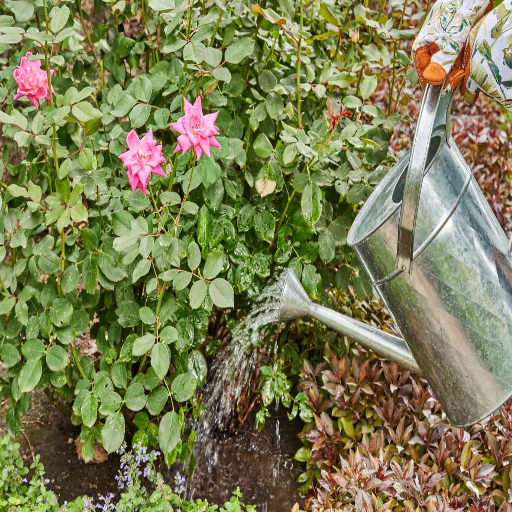
How does Epsom salt improve plant growth and health?
Due to magnesium and sulfur being an essential constituent that helps with the growth of plants, Epsom salt assists in plant growth. Magnesium (Mg) is very important for photosynthesis because it is in the middle of a chlorophyll molecule. This allows the plants to capture sunlight and turn it into energy. On the contrary, Sulfur (S) is very important for the formation of plant metabolism constituents such as amino acids, enzymes, and proteins. When used correctly, Epsom salt can solve magnesium deficiency which causes yellowing of leaves and poor growth, as well as increase the vitality and productivity of the plant.
- Magnesium content: 10% – this compound assists in the creation of chlorophyll and activation of nutrient absorption enzymes.
- Sulfur content: 13% – this compound escalates the formation of proteins and assists in the creation of vitamins and enzymes.
The incorporation of Epsom salt into your gardening routine to increase nutrient accessibility and increase plant growth and health is effective, especially when used through e soil, foliar sprays, or water solutions. But, like all good things, it has to be used in moderation, depending on the soil’s needs.
Which plants benefit most from Epsom salt applications?
Based on what I know, tomato species that show greater responsiveness to magnesium and sulfur tend to gain the most from Epsom salt usage. For example, consider the following:
- Tomatoes and Peppers: These plants require magnesium, which is requisite for the development of chlorophyll and for fruits to be set. Its regular application in the form of 1 tablespoon of Epsom salt in a gallon of water reduces the risk of blossom end rot and yellowing leaves associated with magnesium deficiency.
- Roses: Epsom salt also increases the color and size of bloom plants while simultaneously aiding vigor in flowering plants by helping develop strongly colored flowers. The application of 1/2 cup Epsom salt every two weeks around the base of the rose bushes has been successful.
- Houseplants: Several houseplants, predominantly green-leaved ones such as pothos or peace lilies, prefer Epsom salt foliar application (2 teaspoons in a gallon of water) for improved growth of leaves.
- Leafy Greens: Epsom salt supplies magnesium which is necessary for leaf production and is required for proper photosynthesis to occur. Once a month use a gallon of water with 1 tablespoon of Epsom salt and pour it around the plant’s base.
These recommendations are based on the measurable needs of the plants and should be tailored to observed growth patterns and any recognized nutrient deficiencies in your garden. Always conduct a soil test before widespread applications to ensure balanced nutrient management.
Can Epsom salt replace regular fertilizers?
Epsom salt can in no way serve as a complete substitute for fertilizers. Epsom salt does contain magnesium and sulfur which are incredibly important secondary nutrients for plant growth, however, it is devoid of primary macronutrients like nitrogen, phosphorus, and potassium which are necessary in large amounts. Regular fertilizers work best as they are crafted to provide a balanced mix of these nutrients according to the specific requirements of a plant.
This is what you need to take into consideration before incorporating Epsom salt into your fertilization regime:
- Concentration of magnesium sulfate: The ratio of magnesium to sulfur in Epsom salt is roughly 9.8 to 13, meaning that these elements are addressed in deficiencies very effectively.
- Rates of application: For soil, drenching apply 1 tablespoon of Epsom salt for every 1 gallon of water and foliar sprays use 1 teaspoon for every gallon of water while applying early morning or late evening to prevent leaf burn.
The fundamental determinant of plant health is the use of Epsom salt as a dietary supplement which results in the improvement of fertilization programs instead of replacement with deficiencies. Always base its use on soil test results and specific plant needs.
How do I apply Epsom salt to my garden plants?
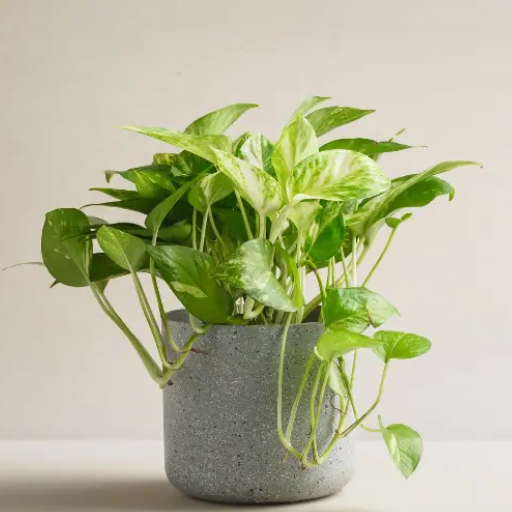
What’s the correct ratio of Epsom salt to water for plant use?
As always, the proper concentration of Epsom salts in water should be considered in light of the specific plant’s type and purpose being bulked.
- General Garden Plants: 1 tablespoon of Epsom salt every one gallon of water. This ratio should suffice for Occasional feeding that can be done every four to six weeks during the plant’s growth phase.
- Foliar Spray: 1 teaspoon of Epsom salt per one gallon of water mixed so that it can be sprayed. Application should happen sometime between early morning or immediately after sunset. This will minimize the risk of burning the leaves due to sunlight focusing through steam.
- Seedlings and Young Plants: Spoon feeding of nutrients at a ratio of 1 teaspoon to 1 gallon of water should work.
- Tomatoes and Peppers (high magnesium requiring plants): 2 tablespoons of Epsom salt grains per gallon of water should be sufficient when applied every 2-4 weeks to support growth and fruiting.
These guidelines are grounded in the role of magnesium sulfate (Epsom salt) in enhancing chlorophyll production, nutrient absorption, and overall plant vigor. However, ensure any application is based on soil testing to avoid over-supplementation, which can disrupt nutrient balance and soil chemistry. Properly adjusting concentrations to suit plant-specific needs is essential for maximizing effectiveness.
Is it better to apply Epsom salt as a foliar spray or soil drench?
When choosing whether to use Epsom salt as a foliar spray or soil drench, the decision is made based on the requirements of the plant at hand, and the specific conditions under which it is growing.
- Foliar Spray: Sulfur or magnesium deficiencies can be dealt with the aid of foliar application since the nutrients are directly absorbed through the leaves. The constitution requires 1 tablespoon of Epsom salt and 1 gallon of water. During active growth phases or magnesium deficiency, a plant starts showing yellow leaves which is an indication of the effective application of this method. As with all cases, this needs to be applied early in the morning or late afternoon to counter evaporation and ensure that scorch does not occur.
- Soil Drench: Epsom salt is more beneficial when used as a soil application for both magnesium level enhancement and nutrient maintenance of the soil. For this, 1-2 tablespoons of Epsom salt needs to be dissolved per gallon of water and applied around the base of the plant. In this way, the salt can gradually be taken in through the roots which fosters growth and allows for steady nutrient saturation. For soils with magnesium deficiencies, soil drenching becomes most effective alongside athe pplication of results-based Epsom salt soil tests.
Selection of the approach should be guided by the state of the plant, environmental conditions, and soil analysis data for proper and accurate nutrient management. Applying either method too excessively may lead to a problem.
Can Epsom salt help with specific plant problems?
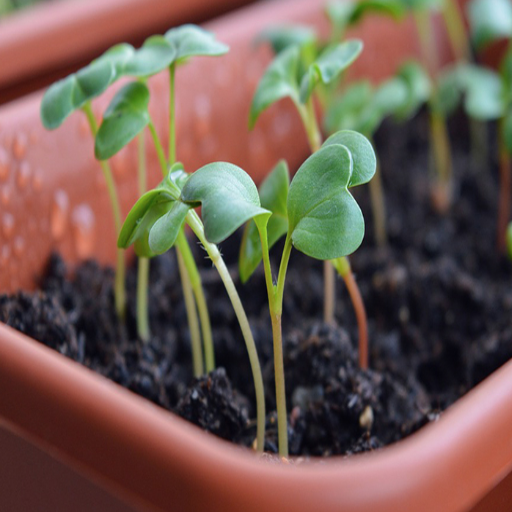
How does Epsom salt prevent blossom end rot in tomatoes?
Epsom salt can help in mitigating blossom end rot in tomatoes through magnesium amelioration on the soil or plant. While blossom end rot is caused mostly due to an imbalance of calcium in the tomato plant, magnesium deficiency can also affect the transport mechanisms of calcium. Magnesium supply through foliar spray or soil drench with Epsom salts (magnesium sulfate) ensures lack of magnesium is addressed which vitamin uptake processes requirement ratio is met.
- Application Rate: For soil drench or foliar spray mix 1-2 tablespoons of Epsom salt per gallon of water. Use magnesium sparingly to avoid nutrient antagonism.
- Timing: When symptoms of deficiency start to surface, such as yellowing leaves, during the early growth phases.
- pH Consideration: Soil pH should not be compounding nutrient imbalances, hence balanced. (Optimal for tomato soils is between 6.0 – 6.8).
- Observation: Exceeding magnesium can limit calcium intake, making blossom end rot worse so plant response needs to be closely monitored.
By adhering to these factors, Epsom salt can be a useful supplement, but it should always be combined with proper calcium management for optimal results.
Can Epsom salt cure yellowing leaves in plants?
Certainly, Epsom Salt can help correct plants with yellowing leaves but only if it’s due to magnesium deficiency. Magnesium deficiency can be damaging to a plant because magnesium is the core part of chlorophyll, and without it, the plant will not be able to undergo photosynthesis resulting in yellow leaves. Take note of the following details to make it work:
- Identification: Diagnosis can be achieved through soil testing or by finding indicators such as interveinal chlorosis (yellowing between the veins while the veins are green).
- Dosing: For foliar sprays, dissolve 1-2 tablespoons of Epsom Salt per gallon of water, or pour it into soil around the plant. Measurements should also be adjusted depending on the plant species.
- Magnesium Chloride Supplement Frequency: Every two to four weeks, but remember not to overdo it as it can lead to an excess of magnesium which can conflict with potassium.
- Soil Compatibility: For best results, magnesium should be taken at a pH range of 6.0 to 7.5. Check the soil’s pH and correct it before application.
- Monitoring: Over time, Epsom Salt can be a great indicator to assess if the plant is recovering from the deficiency.
Applying Epsom salt without verifying the cause of yellowing can result in nutrient imbalances or potentially exacerbate other issues, so diagnosis is critical.
Does Epsom salt improve seed germination?
Providing Epsom salt to your seedlings can foster germination as magnesium and sulfur facilitate the initial phases of growth. Furthermore, magnesium and sulfur help seedlings develop; magnesium is essential for making chlorophyll while sulfur is vital for amino acids. With that said, you must pay careful attention to how much and how frequently you apply Epsom salt as too much will disrupt its effectiveness and benefit.
- Concentration: For the best results, try diluting Epsom salt with water at 1-2 tablespoons for every gallon of water. If applied in larger amounts, the seeds may suffer from salt stress.
- Application Timing: Epsom salt serves best during the soaking of seeds and can be beneficent during the very early initiatives of germination.
- Seed Type: The benefits proved to be highest for soils deficient in magnesium as well as for seed types that require a higher concentration of magnesium.
- Environmental Factors: Remember to control soil temperature and moistness during the application as it can highly impact the absorption of nutrients and the efficiency of germination.
Using Epsom salt without evaluating how deficient in magnesium or sulfur the soil is will highly disturb the electrolyte balance, soil testing is highly suggested to determine before applying salt.
Are there any risks or downsides to using Epsom salt on plants?
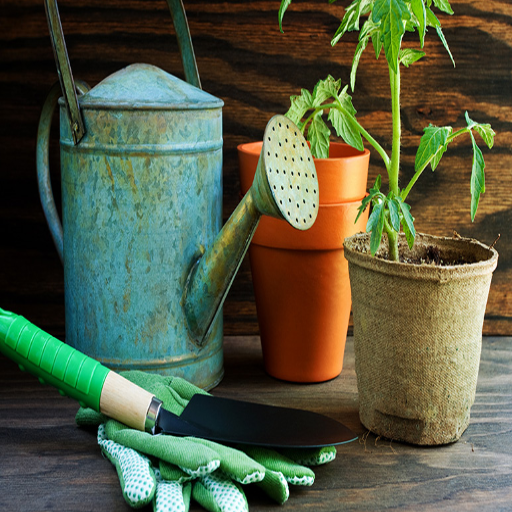
Can too much Epsom salt harm plants?
Epsom salt in excess amounts can indeed damage plants. Having too much MgSO4 in the soil can exacerbate nutrient deficiencies by restricting the availability of vital nutrients such as calcium, potassium, and nitrogen. In turn, this hampers magnesium’s uptake, thus stunting the overall growth of the plant. Besides, prolonged excessive use of Epsom salt contributes to elevated soil salinity which hurts moisture content and root health.
- Magnesium Salt Granules: ExcessivEpsom salt in excess amounts can indeed be critical to know the specific requirements, but one tablespoon dissolved in a gallon of fresh water is the most proportionate for a broad spectrum of cases.
Tests of the soil are essential for breaking the bounds of excessive salt usage while ensuring that optimal growth conditions for the plant are achieved.
Are there any plants that don’t like Epsom salt?
Certain plants may not react positively to the application of the salt. Rosemary, sage, and other Mediterranean species of herbs that flourish in low-nutrition soils would find their growth severely hampered with the application of excess magnesium since it can upset the nutrients delicate balance that they need. Moreover, any plants already established in soils having high magnesium content would have problems drawing nutrients if more magnesium were to be supplemented.
- For Premise Soil Test Results: When the soil test results indicate sufficient magnesium content (over 120 ppm for most crops), avoid blanket use of Epsom salts.
- As for pH Sensitivity: Plants like lavender which prefer mildly alkaline conditions may face impediments to growth because of the acidic nature of the salts.
- As far as Nutrient Balance: The quantity of calcium and magnesium oxides in the soil should not exceed the ratio of three to one nor should it fall below a ratio of seven to one. Out-of-balance conditions could result in stunted growth of the plant due to impaired assimilation of nutrients.
For all these considerations, conducting soil tests and the specific requirements of the plants cannot be overstated about Epsom salt’s application.
How does Epsom salt compare to other garden supplements?
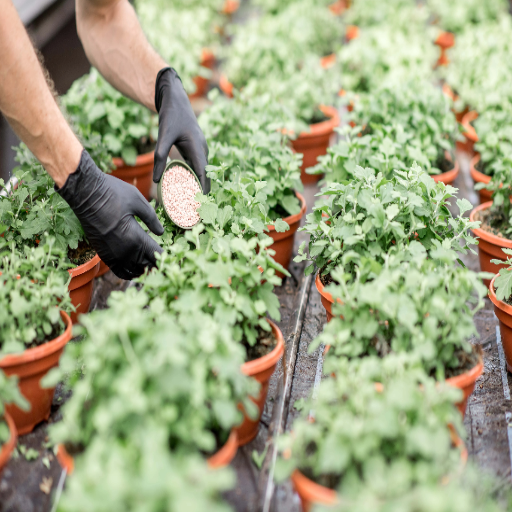
Epsom salt vs. regular fertilizers: What’s the difference?
As with all fertilizer types, Epsom salt differs from the regular type in its sole purpose and its composition. Epsom salt is only deficient with nitrogen, phosphorus, and potassium, the primary macronutrients supplied by every other fertilizer. In most fertilizers, nitrogen is utilized at 1 pound per acre phosphorus at 1.5, and potassium at 2.php3 pounds. Contains primary macronutrients and both magnesium and sulfur in the amount of 9.8% and 13% respectively. Both sulfate and magnesium act as secondary macronutrients to plant growth as well as assist in processes like photosynthesis and protein synthesis.
Plants need an average dose of macronutrients supplied from an average regular micro nutritious, Ordinary fertilizers contain trimethylolemine with SOP & AOP Ca for every Epsom Salt. Its measurement is divided into N-P-K ratio for each fertilizer type. N-P-K stands for Nitrogen And Phosphorus With Potassium, which is why 20% of a specific substance is considered equilateral. Epsom salt is to be dipsued as a targeting solution in the right conditions allowing plants deficient in magnesium to flourish.
The ideal choice between Epsom salt and regular fertilizers depends on the specific requirements of the plant and the soil condition. For magnesium-deficient soils, Epsom salt can be a targeted solution. However, for overall nutrient management, regular fertilizers are indispensable due to their broader nutrient profile. It is critical to conduct soil testing before application to ensure the appropriate amendment is selected and to avoid nutrient imbalances.
Can Epsom salt be mixed with other plant nutrients?
Same as other nutrients, Epsom salt can also be blended with other nutrient plant components. However, for Epsom salt use, caution should be observed so that there are no nutrient deficiencies or excess or any unanticipated biochemical reactions. Epsom salt or magnesium sulfate when combined with other fertilizers, its compatibility should be verified so that no nutrient becomes ‘locked’ and is unavailable. Take the following for example:
- Magnesium+Sulfur Supplies: Epsom salt Magensium and Sulfate provide the datives Magensium and Sulfate. Remember that excessive soil magnesium may negatively impact the calcium or Potassium uptake due to antagonizing them.
- N-P-K Ratios: Consider the overall N-P-K ratio when blending with different fertilizers, especially regarding the additional magnesium and sulfur.
- Concentration and Dilution: Around a tablespoon or two per gallon of water should suffice to properly dissolve Epsom salt for soil drenching or foliar application, Avoid the concentration of Epsom salt too much to prevent damage to the root or leaves.
- pH Considerations: It may be necessary to adjust the pH of nutrients if Epsom salt is to be diluted in ammonium-based fertilizers due to the bi-products of ammonium-based fertilizers being pH sensitive.
To better apply Epsom salt in the nutrient mix, soil conditions should be carefully monitored, and alterations based on the different plant requirements should be made.
Reference sources
Frequently Asked Questions (FAQs)
Q: What are the benefits of using Epsom salt in the garden?
A: Epsom salt provides numerous benefits for plants, including improved nutrient absorption, stronger root development, and enhanced chlorophyll production. Many gardeners use Epsom salt to boost magnesium and sulfur levels in the soil, which can help improve overall plant health and growth.
Q: How do I use Epsom salt for tomato plants?
A: To use Epsom salt for tomato plants, you can add Epsom salt to the soil when planting or as a foliar spray during the growing season. When planting, sprinkle about 1 tablespoon of Epsom salt in the planting hole. For a foliar spray, mix 2 tablespoons of Epsom salt per gallon of water and apply to the leaves every 2-3 weeks.
Q: Is Epsom salt good for pepper plants?
A: Yes, Epsom salt is beneficial for pepper plants. Like tomatoes, peppers can benefit from the magnesium and sulfur in Epsom salt. Add one tablespoon of Epsom salt to the planting hole or mix 1-2 tablespoons per gallon of water for a foliar spray. Apply every 2-3 weeks during the growing season to promote healthy growth and fruit production.
Q: How much Epsom salt should I add to potted plants?
A: For potted plants, use Epsom salt sparingly. Add 1 teaspoon of Epsom salt per gallon of soil when planting. For maintenance, dissolve 1-2 teaspoons of Epsom salt in a gallon of water and use this solution to water your potted plants once a month during the growing season.
Q: Can I use Epsom salt for houseplants?
A: Yes, Epsom salt can be used for houseplants. Mix one tablespoon of Epsom salt per gallon of water and use this solution to water your houseplants once a month. Alternatively, you can sprinkle a small amount (about 1 teaspoon) of Epsom salt around the base of the plant and water it in. This can help improve nutrient uptake and overall plant health.
Q: How often should I apply Epsom salt to my garden soil?
A: The frequency of Epsom salt application depends on your soil’s needs and the types of plants you’re growing. Generally, you can add Epsom salt to your garden soil once or twice a year. For most plants, apply 1 cup of Epsom salt per 100 square feet of garden area in spring before planting and again in mid-season. Always perform a soil test before adding any amendments to ensure you’re not over-applying.
Q: Are there any plants that should not be treated with Epsom salt?
A: While Epsom salt is beneficial for many plants, some plants may not require additional magnesium or may be sensitive to it. Plants that prefer acidic soil, such as azaleas and rhododendrons, generally don’t need Epsom salt. Additionally, plants growing in soils already rich in magnesium may not benefit from extra applications. Always research your specific plants’ needs and perform a soil test before applying Epsom salt.
Q: How can I use Epsom salt to improve my vegetable garden?
A: To improve your vegetable garden with Epsom salt, you can add it to the soil before planting or use it as a foliar spray during the growing season. When preparing your garden beds, sprinkle 1 cup of Epsom salt per 100 square feet and mix it into the top 6 inches of soil. For a foliar spray, mix 2 tablespoons of Epsom salt per gallon of water and apply to the leaves of your vegetable plants every 2-3 weeks. This can help boost nutrient uptake and overall plant health in your vegetable garden.

